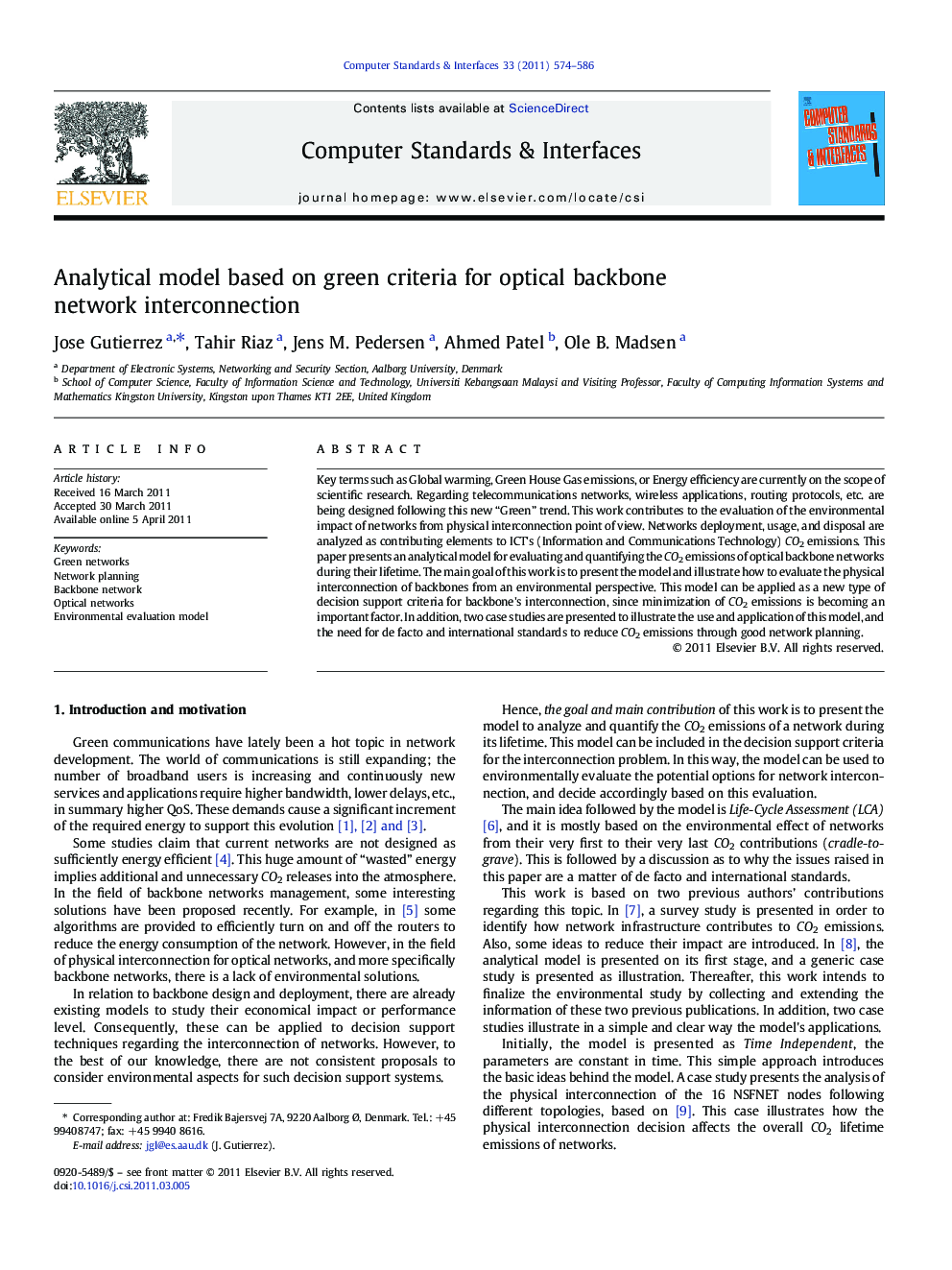| Article ID | Journal | Published Year | Pages | File Type |
|---|---|---|---|---|
| 454328 | Computer Standards & Interfaces | 2011 | 13 Pages |
Key terms such as Global warming, Green House Gas emissions, or Energy efficiency are currently on the scope of scientific research. Regarding telecommunications networks, wireless applications, routing protocols, etc. are being designed following this new “Green” trend. This work contributes to the evaluation of the environmental impact of networks from physical interconnection point of view. Networks deployment, usage, and disposal are analyzed as contributing elements to ICT's (Information and Communications Technology) CO2 emissions. This paper presents an analytical model for evaluating and quantifying the CO2 emissions of optical backbone networks during their lifetime. The main goal of this work is to present the model and illustrate how to evaluate the physical interconnection of backbones from an environmental perspective. This model can be applied as a new type of decision support criteria for backbone's interconnection, since minimization of CO2 emissions is becoming an important factor. In addition, two case studies are presented to illustrate the use and application of this model, and the need for de facto and international standards to reduce CO2 emissions through good network planning.
Research highlights►We study the environmental contribution of optical backbone networks ►We present an analytical model to quantify and evaluate their lifetime emissions ►This model can add an environmental point of view to optical networks deployment ►We present two case studies to illustrate the ideas ►We discuss the future applications regarding international norms and processes.
